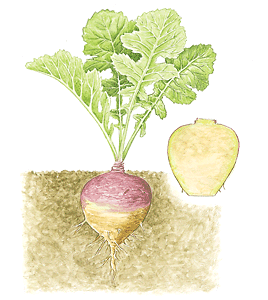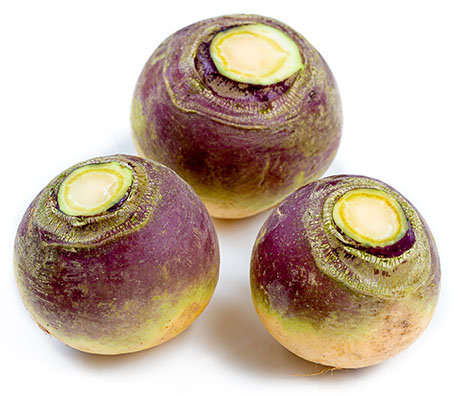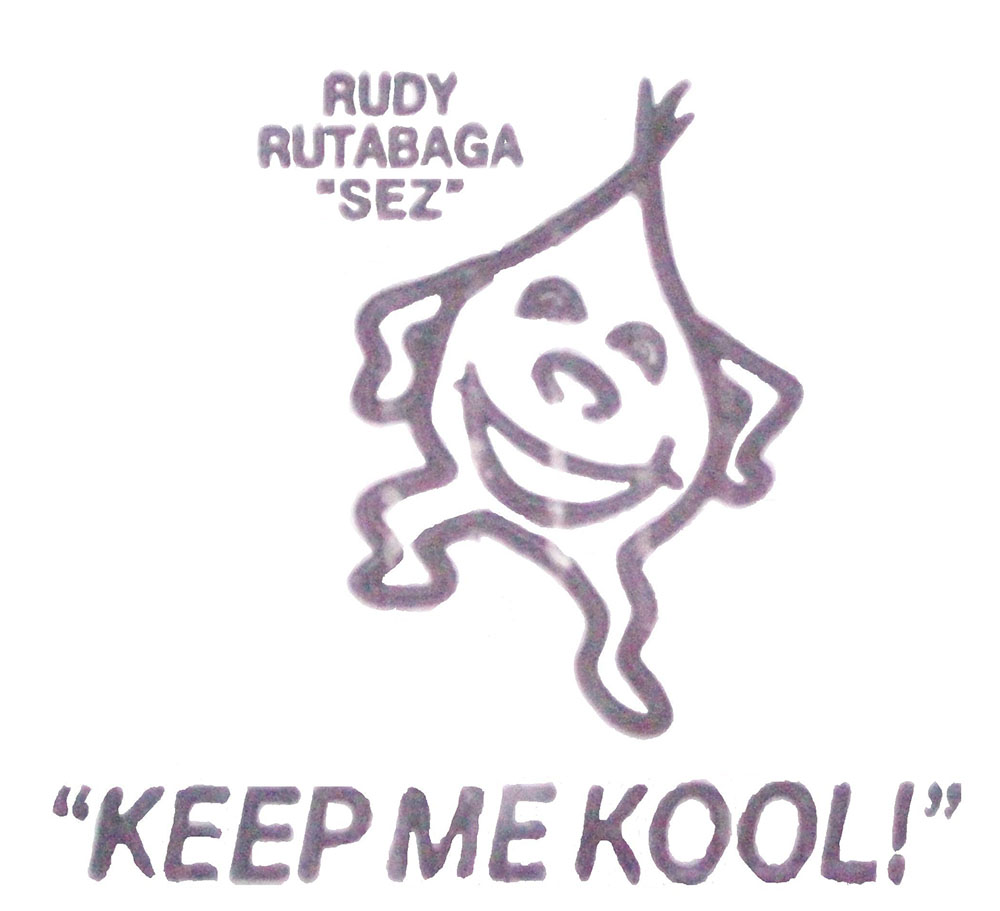|
We collect basic website visitor information on this website and store it in cookies. We also utilize Google Analytics to track page view information to assist us in improving our website. |
CONTINUE |
Rutabaga is the result of an ancient genetic cross between turnips and cabbage, making rutabaga a centuries-old genetically modified crop. When it comes to rutabaga vs. turnip, the major difference is their size and color. Rutabaga is generally yellow or brown with golden flesh, while turnips can be white or white and purplish pink in color with a white flesh. Oblong-shaped rutabagas are also much larger than turnips and feature a rougher, bark-like exterior. As for taste, the rutabaga is considered the sweeter of the two; they’re popular in vegetable or beef stews. Both root vegetables have edible, nutrient-rich greens that can be eaten raw or cooked. Rutabagas, turnips, and cabbage are all members of the Brassica family, and are generally referred to as cruciferous vegetables. Broccoli, cauliflower, kale, and Brussels sprouts are all members of the same tribe. Other names for rutabaga are Neobrasscia, swede, neep, or snagger. Rutabaga is very nutritious, high in antioxidants, and, as part of a healthy diet, may contribute to improved overall health.
Rutabagas are a great source of antioxidants like carotenoids and vitamin C. Antioxidants work to fight off free radicals and keep cells healthy, contributing to anti-aging, immune health, and anti-inflammation.
Vitamin C is a very versatile antioxidant that’s been shown to strengthen the immune system and promote collagen growth. It also plays a vital role in iron absorption to help promote oxygen-rich blood.
Carotenoids are a type of antioxidant associated with healthy eyes and a reduced risk for certain cancers and eye diseases.
Rutabaga is also a good source of glucosinolates, a type of sulfur-containing antioxidant found in cruciferous vegetables. They have been shown to successfully limit inflammation and potentially reduce the risk of heart disease, colorectal cancer, prostate cancer, and breast cancer.
Rutabaga is a great source of fiber, which can aid health in a number of ways. Two ways it helps digestive health are adding bulk to stool and feeding healthy gut bacteria. These digestive aids are a result of rutabaga being high in insoluble fiber.
Fiber’s benefits can extend beyond digestive health, too. A healthy microbiome—which is partly fueled by insoluble fiber—may have multiple health impacts, including improved mood, better immune function, and less inflammation. A high-fiber diet is also associated with lower cholesterol and better heart health.
Vitamin C and glucosinolates may help slow the aging process in a couple of ways.
For starters, vitamin C not only helps tame oxidative stress on skin cells and reduce inflammation, but it also plays a role in collagen production. Collagen is required for healthy skin, while also helping to protect the skin from potential damage via UV rays and more.
Glucosinolates may also help protect skin from UV rays, but research up to this point is rather limited.
Fruits and veggies fit nicely into most weight loss diets, and rutabaga might have some added benefit. Because it is so high in fiber, it has the potential to limit appetite by helping you feel fuller, longer. This can be a tool to help prevent snacking and overeating.
The benefits of fiber may extend even further than curbing appetite. It’s possible that having a more diverse population of gut bacteria can prevent long-term weight gain.
Potassium plays a crucial role in the function of cells, and therefore a big role in overall health and functionality. One of the most important functions of potassium may be its effect on heart function. It helps maintain healthy blood pressure and regulate sodium balance, and people with high-potassium diets tend to have a lower risk for stroke and heart disease risk.


The two members of the cabbage family actually are different plants, although they have a lot in common, including not only most of their genes, but also a thickened, often rounded taproot and edible leaves.
The turnip is a thick-rooted selection (Brassica rapa rapa) of wild mustard (B. rapa), a highly variable and wide-ranging Eurasian plant that has been developed into a whole range of different edible plants, including bok choy (B. rapa chinensis), field mustard (B. rapa oleifera) and Chinese cabbage (B. rapa pekinensis).
The form with an edible taproot (the turnip) is believed to have been developed over 2,000 years ago and was known to both the Greeks and Romans. Essentially, through generations of selection, thick-rooted forms of the wild species, which originally only had a narrow taproot, were developed and grown, both for human consumption and as livestock fodder.
The rutabaga (Brassica napus napobrassica) apparently originated spontaneously in Europe sometime in the late Middle Ages (although the first printed reference to it only appeared in 1620), when a cabbage (Brassica oleracea), a different, but closely related species, crossed with a turnip (B. rapa rapa).
This is an unusual cross, as the parent plants have different chromosome numbers (18 for cabbage and 20 for turnip) and that usually results in sterility, but the hybrid plant spontaneously produced tetraploid seed with 38 chromosomes, resulting in a plant reproducible by seed.
Farmers recognized the value of the larger-rooted rutabaga and began growing it, especially in Scandinavia. It was introduced into the rest of Europe through Sweden in the late 18th century, hence the name: rutabaga comes from the Swedish term rotabagge for lumpy (bagge) and root (rot). For the same reason, it’s also known as Swedish turnip or swede in many areas.
Turnips seen in your local supermarket usually have white skin or white skin with a purple top, while rutabagas usually have yellow skin with a purple top. Both though can come in a wide range of colors.
The skin of turnips is smooth and thin and peeling is not absolutely necessary. Rutabagas have a thicker, rougher skin that you usually peel off.
Rutabagas sold in supermarkets have often been dipped in wax to preserve them, but that is not the case with turnips.
Rutabaga leaves are smooth, waxy and bluish green like cabbage leaves; turnip leaves are green, somewhat rough and lightly covered with sparse stiff hairs.
Turnip leaves grow directly from the top of the root: there is no stem at harvest. Rutabagas form, over time, a short, thick stem on top of the root. The leaves of both are edible. Indeed, some turnips, like ‘Seven Top’, are grown strictly for their greens.
Rutabaga roots are always more or less round, but there are long, carrotlike forms of turnip while some turnips, like the aforementioned ‘Seven Top’, produce no thickened root at all.
Rutabagas are much slower to mature and are usually sown only in the spring for a late fall harvest.
Turnips can be grown almost anywhere, even in the tropics, as long as they are grown during cooler months. Rutabagas need a long growing season under fairly cool conditions and therefore only do well in cooler climates.
As for taste, turnips have a stronger taste than rutabagas, somewhat bitter or peppery like a radish, especially when eaten raw … or you could turn that around and say rutabagas taste milder and sweeter than turnips.



